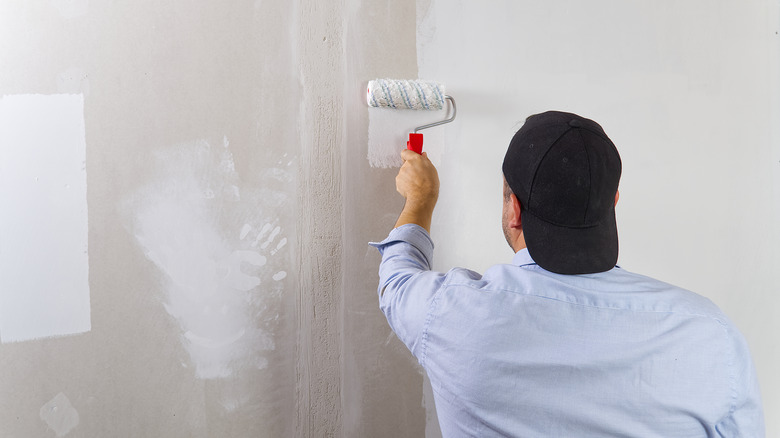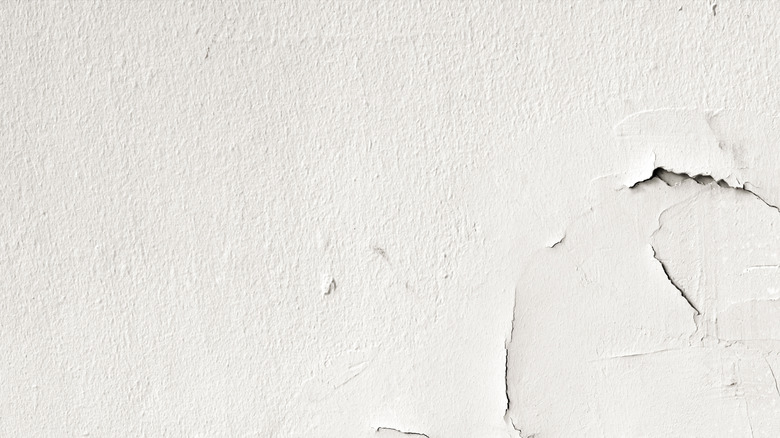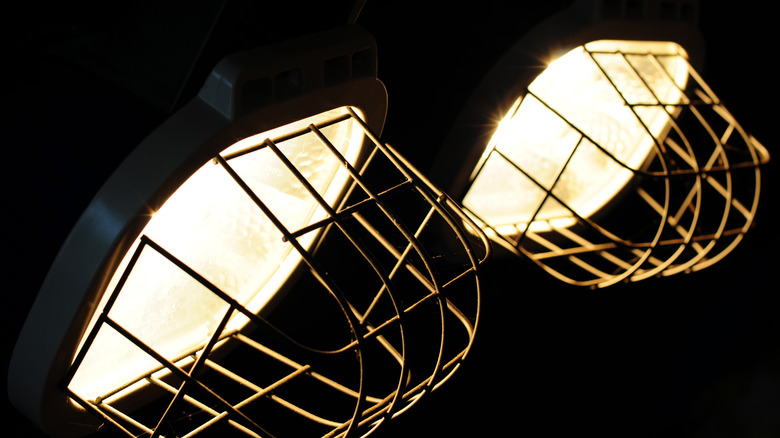The Big Mistake You Don't Want To Make When Painting New Drywall
Drywall is the most common interior material used for walls and ceilings in a home, as it creates a sturdy wall that also has some sound-dampening capabilities. When it's time to paint it, though, it creates a number of challenges for a variety of reasons. Failing to take certain precautions can leave you with an uneven finish that may not be fully noticeable until well after you finish the job. The first and most important task you should perform before beginning to paint is to fully remove all dust from sanding the joint compound. Your primer will not adhere properly if any dust remains on the surface, leading to problems with the look and longevity of the paint job on the drywall.
Cleaning drywall dust and joint compound is a challenging job. The loose particulates from sanding the joint compound are extremely fine and seem to stick to everything. The paper coating on the drywall gives the fine dust the ability to remain in place because of its porosity. Additionally, as you apply a moist cloth in an effort to pick up the fine particles, they may attempt to harden again.
Start by sweeping the floors to remove dust that may swirl around. Take any plastic sheeting outdoors to shake particles loose. Use a shop vac to pull the particles off the walls, placing the vacuum body outside the room to prevent dust clouds from re-emerging in the room. Then, wipe the drywall with a lightly dampened cloth.
What happens if you do not thoroughly clean dust from the drywall before you paint?
Don't bother attempting to clean the dust on the drywall until you are completely finished sanding and smoothing the joint compound. More sanding will simply create more fine particles, so it's best to wait until the end of the sanding project. To ensure that you remove all the fine dust, go over the drywall a couple of times with the shop vac and the damp cloth.
If you do not remove all the dust, your primer will not adhere to the drywall properly and will not soak into the paper coating. It's also possible that the dust and other fine particles will show through the paint job as it dries, leading to a poor-quality finish on the walls once everything dries. Problems with adherence and dust showing through can lead to peeling and flaking after a few months, forcing you to restart the job.
Some people hire a professional to hang the drywall, while others attempt to hang drywall themselves for a DIY job. One benefit to having a pro hang the drywall is that the pro will do the taping and mudding for you, including sanding the joint compound to hide the screw heads and seams. Many pros will even clean the surface to remove the fine particulates. If you are doing the paint job yourself, though, you should still double-check the cleaning of the dust before you paint.
Use high-quality lighting to inspect the drywall for any remaining dust before painting
One of the challenges of completely removing the fine particles in drywall dust is that you may not have proper lighting in place to inspect the surface. Often, hanging drywall is part of a new construction or a remodeling project that leads to the removal of the lighting fixtures in a room or that occurs when the electrical power is not active.
You will want to bring in a powerful work light when you are inspecting the drywall for the presence of any dust. A bright LED is the best tool for allowing you to clearly see the remaining dust after you vacuum and wipe down the walls. Some work lights run from a battery, which you may need if you don't have any electrical power from an outlet available. You can pick a battery-powered LED with an attached stand for leaving it in place and a handle for carrying it near the drywall for up-close inspections.
You also should inspect the drywall after applying the primer coat of paint, looking for any areas where any remaining dust may be affecting the ability of the primer to adhere to the drywall. Using the powerful work lights up close again in this step is helpful for finding any imperfections after priming the walls. If you find areas with remaining dust, use sandpaper to remove the paint and a damp cloth to wipe away the dust before repainting.


